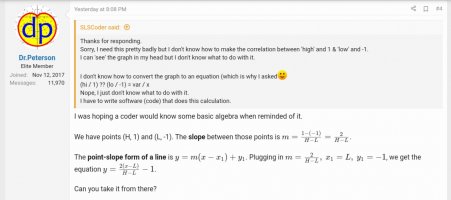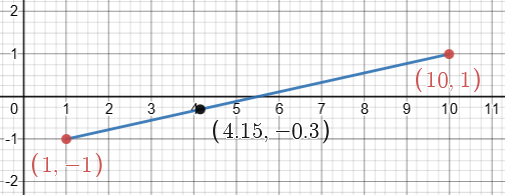SLSCoder
New member
- Joined
- Aug 24, 2021
- Messages
- 21
I have a number, the 'high' that can be positive, negative or zero and can be a fraction.
I have another number, the 'low' that can also be positive, negative or zero and can be a fraction.
I have another number (a variable) that can be anywhere between the high and the low.
I need the high to be represented by 1 and the low to be represented by -1.
I need to find what the variable number would be (between 1 & -1).
I have another number, the 'low' that can also be positive, negative or zero and can be a fraction.
I have another number (a variable) that can be anywhere between the high and the low.
I need the high to be represented by 1 and the low to be represented by -1.
I need to find what the variable number would be (between 1 & -1).


